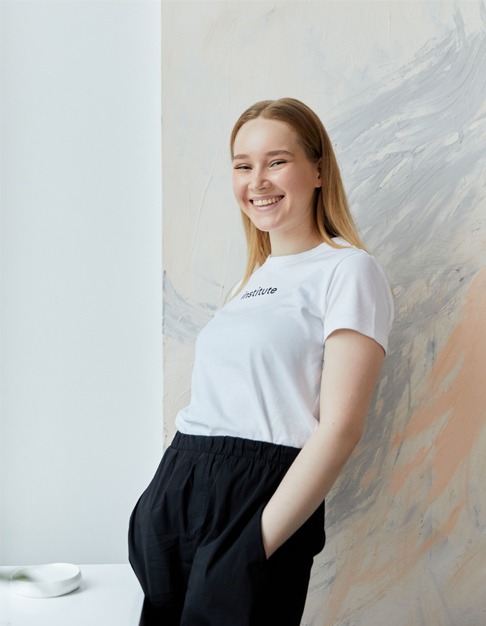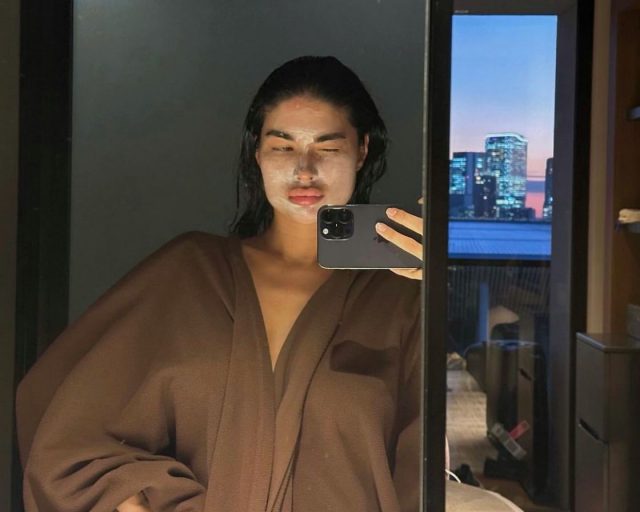
Peeling is almost a panacea in the world of cosmetology. Correctly selected peeling can brighten the skin, lighten pigmentation, even out skin texture, smooth wrinkles, improve skin turgor, clean pores and solve dermatological problems such as acne, rosacea and hyperkeratosis. We talked to a beautician about the difference between at-home peels and salon peels and asked her to tell us about the three most popular peels.

Eliza Semenova, beautician and esthetician at the Institute of intelligent beauty space
Why do you need peeling?
Our epidermis renews itself every 27 days. But with age, this process slows down: at 35 years old, renewal occurs every 35 days, at 40 – every 40 days, etc. takes place. Peeling helps cells go through a life cycle of 27 days. The product exfoliates dead cells and initiates the cell renewal process for a bright and even skin.
Also, peeling is a good way to prevent age-related changes. It makes the skin elastic, smoothes fine wrinkles, relieves pigmentation, normalizes sebum production, dissolves not only surface dead cells, but also blackheads (therefore, peeling is considered a way to deeply cleanse the skin).
Home and salon peeling: what’s the difference?

Here are a few key differences between at-home peeling and salon peeling.
— Concentration of active substances. The shells that can be used at home are soft. That is why the concentration of active ingredients in them is significantly lower than in professional products. This is necessary in order not to damage the skin at home.
— Execution frequency. Typically, at-home peels can be used one to three times a week, depending on your skin condition. Due to the higher concentration of active ingredients, peelings in a beautician’s office are recommended to be done on average every 10-14 days (in the case of superficial peeling) or every 2-4 weeks (in the case of superficial peeling). medium shells).
— Skin reaction. Medium peels penetrate deeper layers of the skin and can therefore cause peeling. For this type of peeling, the skin must be prepared in advance with lighter peelings and home care.
— Yield. Deep peelings, like medium peelings, can only be performed by a doctor.
— rehabilitation process. Rehabilitation after professional peeling may take 3 to 10 days, depending on the condition of the skin. Moreover, the recovery period after deep peeling can be up to two weeks. With home remedies, such problems do not arise.
What types of peelings for facial skin are available in cosmetology?

Typically, peels are divided by the depth of penetration into the layers of the skin. Therefore, the following types are distinguished.
— Superficial (enzyme, acid, gamma, rays). They are non-stripping and work on the skin surface. Some of them can be used at home: acidic (AHA-mandelic, lactic, glycolic, citric, grape, apple, etc.), BHA-salicylic, PHA-lactobionic, glycolic. Acids need to be selected individually depending on the condition and type of skin.
— Median (Blend of AHA and BHA acids, TCA peeling, retinoic peeling). These shells may not be washed. The customer goes home with them and keeps them for 4-12 hours. Peels can be applied in layers, which helps regulate the depth of penetration into the skin.
— Deep (laser grinding at different depths). This type of peeling is done only by a doctor. They work on stretching, scars, pigmentation, rehabilitation after them is more serious and lasts longer.
It doesn’t matter what type of peeling you choose; For home or professional use, you need to choose it together with a specialist according to the needs and condition of the skin.
The 3 most popular peelings
The possibilities of cosmetology are expanding every year. Since peeling is one of the most popular procedures in a beautician’s office, there are many varieties of them. Below are examples of the most popular ones.
Retinoic peeling
It has a sebum regulating effect, relaxes the sebaceous gland and has an anti-acne effect, lightens pigmentation, stimulates collagen production and provides an anti-aging effect. Peeling penetrates into the deep layers of the epidermis, so it is considered quite aggressive compared to others. Contraindications: individual intolerance and skin condition, pregnancy, breast-feeding.
RHA peeling
Even those with the most sensitive skin can do this peeling; It helps fight acne, rosacea and age-related changes. PHA acids contained in this peeling help repair the epidermal barrier, improve and moisturize the skin microflora.
enzyme peeling
The gentlest peeling that works superficially in a beautician’s office. It can be done by anyone, including pregnant women, breastfeeding women, acne and rosacea patients, and sensitive skin. Gentle exfoliation occurs due to enzymes, which are proteins of plant origin that gently exfoliate dead cells from the surface of the epidermis. Ideal for home use, for those who are afraid of damaging or overdoing the peeling.
Source: People Talk
I’m Roger Gritton, and I’ve been writing for the The Fashion Vibes for over 5 years now. My specialty is beauty news; I’m passionate about covering the latest trends, products, and innovations in the industry. In my time there, I’ve become known as an authority on all things beauty-related.
I love discovering new experts to interview, researching up-and-coming ingredients and techniques that are making their way onto our beauty shelves and highlighting people who are making a difference in the world of cosmetics. My work has appeared not only on The Fashion Vibes, but also several other publications including the New York Times Magazine, Allure Magazine and Refinery29.





